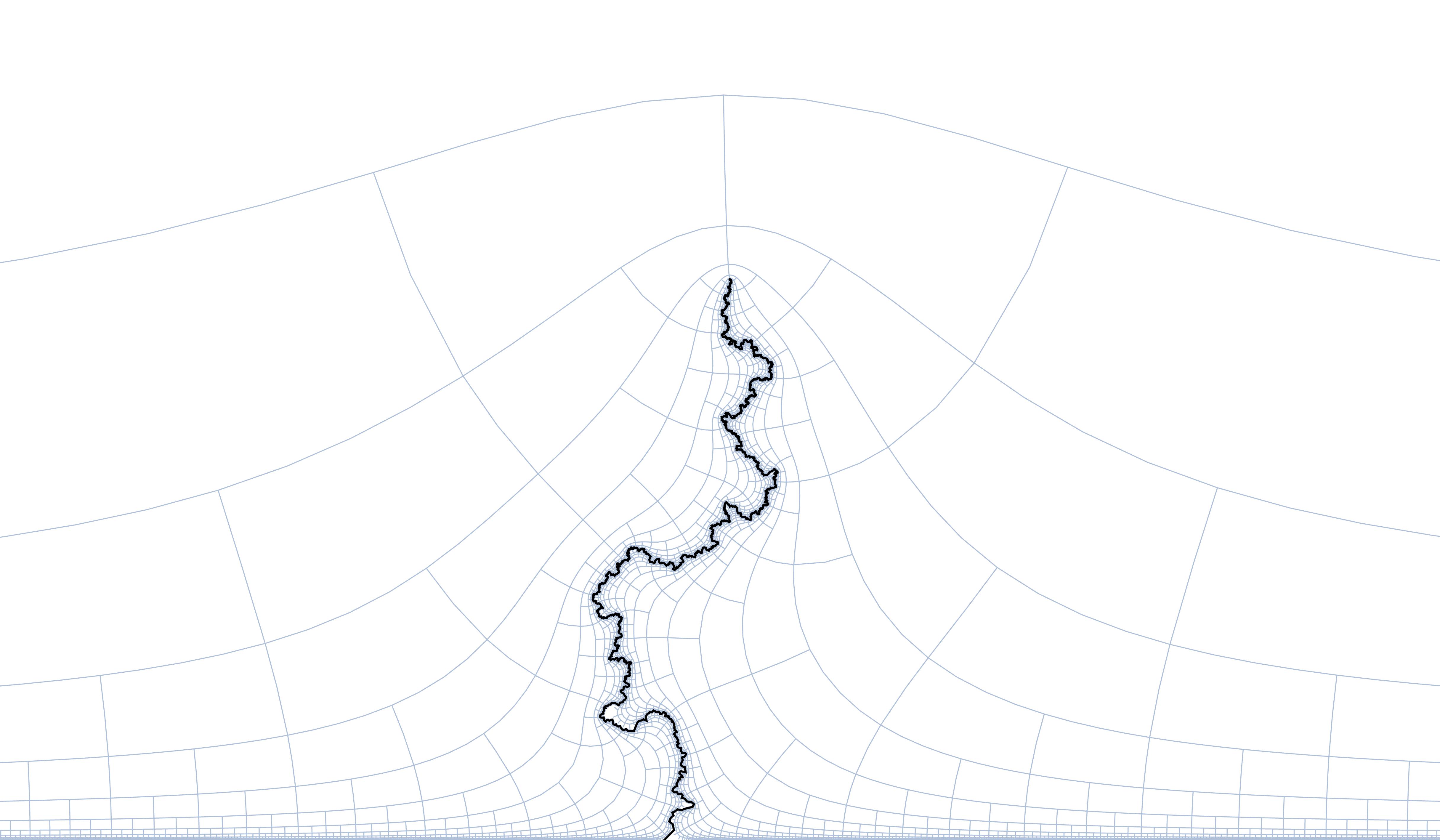An introduction to Schramm-Loewner evolution SLE$_\kappa$
Speaker(s): Tim Mesikepp(BICMR)
Time: February 20 - June 26, 2023
Venue: Room 77201, Jingchunyuan 78, BICMR
Overview
A hundred years ago, Charles Loewner showed the evolution of maps $g_t$ from the slit disk $\mathbb{D} \backslash \gamma([0,t])$ back to $\mathbb{D}$, where $\gamma$ is a curve growing into $\mathbb{D}$ from its boundary, satisfy a differential equation which in effect transforms $\gamma$ into a continuous \emph{driving function} $\lambda(t) = g_t(\gamma(t))$ taking values on $\partial \mathbb{D}$. Loewner's approach played an important role in de Branges' proof of the Bierberbach conjecture in 1985, and received renewed interest following the ground-breaking 2000 work of Oded Schramm, who showed that the random curves generated by using a Brownian driving function run at speed $\kappa$ give the only-possible conformally-invariant scaling limits of a number of discrete models from statistical physics. These processes, typically normalized to live in the upper half plane $\mathbb{H}$ now instead of Loewner's $\mathbb{D}$, and known as \emph{Schramm-Loewner-Evolutions SLE$_\kappa$}, have been intensely studied since and continue to be a topic of active research.
In this course we explore this story, briefly covering the above history but primarily focusing on the post-2000 developments and the beautiful mathematics that emerged following Schramm's work. For the majority of the class we will seek to build the toolbox that combines complex analysis and stochastic calculus to give the foundational results of the theory. Towards the end we will also try to sketch the more ``modern'' approach following the breakthrough works of Sheffield-Miller connecting SLE to the Gaussian Free Field. There will also be opportunities for student presentations, and flexibility in the content covered to meet students' interests.
Prerequisites
Students should have some background in elementary complex analysis and probability; we will review more advanced results
from conformal mapping theory, and also recall key results from stochastic calculus. Lectures will be in English due to the low
Mandarin level of the instructor.
Topics covered
These are provisional and open to student requests. They also may not be necessarily covered in exactly this order.
1)Intuition and motivation from statistical mechanics models
2)Loewner equation and complex analysis background
2.1)Summary of tools from geometric function theory (Riemann maps, Koebe distortion, Beurling's estimate, invariance of Brownian motion)
2.2)Hulls, half-plane capacity and Loewner's equation ($\mathbb{H}$ and $\mathbb{D}$)
2.3)Convergence of Loewner chains and pathologies
3)Review of stochastic calculus
4)Schramm's theorem: SLE$_\kappa$ only possible scaling limit
5)Existence of SLE trace, Rohde-Schramm theorem, phase transition as $\kappa$ varies
6)Convergence of certain discrete models to SLE$_\kappa$
7)Properties of trace (Hausdorff dimension, green's function, Holder continuity, reversibility etc)
8)Duality; continuity of the trace $\kappa$
9)Large deviations as $\kappa \rightarrow 0^+$
10)SLE$_\kappa(\rho)$ processes and change of coordinates
11)SLE$_4$ as level set of GFF; modern viewpoint: quantum surfaces and quantum zipper
Time
Single week & double week : Friday, 10:10 a.m.—12:00 p.m.
Double week : Wednesday, 10:10 a.m.—12:00 p.m.Wednesday
More Information
Mesikepp.github.io/Teaching/S23/index.html



